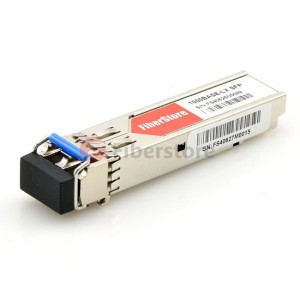How to Choose a Suitable SFP Transceiver?
With the increasing deployment of fiber in the LAN and WAN, especially for building and campus backbone installations, the small form factor (SFF) fiber-optic connector is more and more popular. One kind of transceivers called SFP is a small form-factor pluggable transceiver. It’s used for both telecommunication and data communication applications. The form factor and electrical interface are specified by a multi-source agreement (MSA). SFP transceivers are designed to support SONET, gigabit Ethernet, Fibre Channel, and other communications standards.

SFP is a cost effective way to connect a single network device to a wide variety of fiber cable distances and types. Network upgrades are made easier because SFP is interchangeable fiber connectors that can adapt to any existing network. SFP provides the network flexibility with high speed. As SFP has so many benefits, it is a popular industry format jointly developed and supported by many network component vendors. Users will find it difficult to choose a suitable SFP transceiver. What factors should users consider when buy a SFP?
SFP transceivers are available with a variety of different transmitter and receiver types. So users could select the appropriate transceiver for each link to provide the required optical reach over the available optical fiber type such as multi-mode fiber and single-mode fiber. The difference of the two kinds comes from the distance limitations encountered with the various types of optical transmission. Multi-mode is for short range up to 550 meters and single-mode fiber is for long range up to 10 kilometers. SFP transceiver is also available with a "copper" cable interface, allowing a host device designed primarily for optical fiber communications to communicate over unshielded twisted pair networking cable.
Fiber cables consist of the cable and connectors. So users should also consider connectors when buy the transceiver. There are multiple choices for connector type. The main differences among types of connectors are dimensions and methods of mechanical coupling. Multi-mode fibers and single-mode fibers require different connectors. SC and LC connectors are by far the most common types of connectors on the market.
The transceiver supposed to work in what switch/router should be considered. You should ask if the equipment "open for 3rd party transceivers" or "vendor locked". In order to be accepted by the equipment, the transceiver has to be coded. Therefore switch/router brand and model & firmware version must be known.
The suitable transceiver is determined by optical fiber type, the connector, the equipment compatibility, the wavelength, the protocol, the temperature and some other factors. Based on these factors, you will choose a suitable SFP transceiver. Fiberstore manufactures and supplies a complete range of SFP transceiver modules which can be customized. In addition, we also provide Compatible SFP transceivers as alternatives to those branded by Cisco, HP, Juniper etc. All of our SFP transceiver modules come with a lifetime advance replacement warranty and are 100% functionally tested.